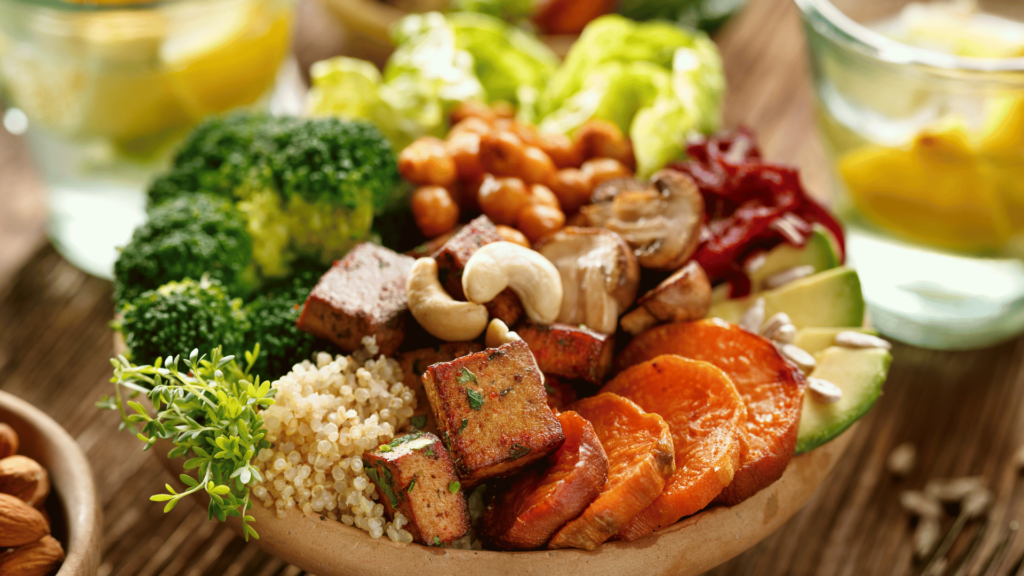
Winters are tough for weight loss. Losing weight during the winter months can be challenging due to a combination of factors. Cold weather tends to discourage outdoor activities, leading to a reduction in overall physical activity levels. The desire for warm, comforting foods can contribute to cravings for calorie-dense meals, potentially leading to overeating. Additionally, the winter season is often associated with holidays and festivities, introducing indulgent and high-calorie foods into one’s diet. Reduced exposure to sunlight may impact mood and energy levels, potentially affecting motivation for exercise. Hydration can also be a challenge as the sensation of thirst may diminish in colder temperatures.
Moreover, social isolation during winter can limit opportunities for group activities and exercise, which are often supportive elements in weight loss efforts. Despite these deterrents, it is possible to stay committed to your weight loss mission by following these tips :
Create calorie deficit: Winter foods that we all love are mostly high calorie, as they include fats and sugars. A winter diet for weight loss should focus on providing you with the necessary nutrients while helping you maintain a calorie deficit. So, some gajar ka halwa, makkhan laden paranthas, and jalebis are fine if you are having small quantities and keeping still below your daily calorie limits.
Include Seasonal Vegetables and fruits: Winter offers a huge variety of nutrient-rich vegetables. It is wise to add every possible seasonal fruit and vegetable to your weight loss diet plan. Include cruciferous vegetables like broccoli, and cauliflower, root vegetables like sweet potatoes, carrots, radishes, turnip, and beetroot, and leafy vegetables like spinach, methi, sarson, and bathua in your diet. Vegetables are not only full of nutrients, but also low in calories. Winters also offers a wide variety of fruits like oranges, guava, Chiku, apples, strawberries, etc. Guava is one of the most fibrous fruits around us. It can be a smart addition to your winter weight-loss diet plan. Guava helps in stimulating digestion and metabolism, which boosts weight loss.
Lean Proteins: Include lean protein sources such as chicken, fish, low-fat paneer or cow milk paneer, legumes, and beans. Green peas are an excellent source of proteins in winter. It can be incorporated into a variety of dishes like curries, pulao, kebabs, etc. Protein helps in maintaining muscle mass and helps you feel full.
Healthy Fats: Incorporate sources of healthy fats, such as avocados, nuts, seeds, ghee, and olive oil. These fats can help keep you satisfied and provide essential nutrients like fat-soluble vitamins. Opt for virgin, unrefined, cold-pressed oil instead of refined oils. Most of the store-bought snacks and biscuits have saturated fats like palm oil and margarine which are unhealthy. Avoid them completely.
Whole Grains and Millets: Choose whole grains and millets like brown rice, quinoa, oats, jowar, bajra, ragi, etc. They are rich in nutrients and provide fiber, which aids in digestion and helps you feel full for longer. The high fiber content also aids in regulating blood sugar levels, preventing spikes that can lead to overeating. Millets have a low glycemic index, which means they have a minimal impact on blood sugar. Moreover, their complex carbohydrates are digested slowly, providing a sustained release of energy, and reducing the likelihood of unhealthy snacking. Incorporating millet into your diet can contribute to a well-rounded and effective approach to weight loss.
Warm Beverages: Stay hydrated with warm beverages like herbal teas and soups. Herbal teas boost metabolism and help in weight loss. Popular herbal teas known for their potential weight loss properties are green tea and peppermint tea. Packed with antioxidants, these have been studied for their ability to boost metabolism and enhance fat burning. Homemade soups are filling, highly nutritious, and low in calories if you do not add cream and butter to them. Drinking water before meals can also help control appetite.
Portion Control: Be mindful of portion sizes to avoid overeating. Use smaller plates to create the illusion of a fuller plate. Add more salad, vegetables, and protein-rich foods on the plate instead of more pooris and rice. There is a tendency to overeat in winter but that is what is most important to control.
Limit Processed Foods and Sugars: Cut back on processed foods, sugary snacks, and drinks. Processed foods are high in carbohydrates and low in nutrients. Instead, choose whole, unprocessed foods to ensure you get essential nutrients without unnecessary calories. You may replace sugar with jaggery because of its nutritional value.
Include Spices and herbs: Spices and herbs like cinnamon, ginger, mint, cumin seeds, and turmeric not only add flavor but also have potential health benefits, including metabolic support. Methi dana or fenugreek seeds are a wise addition to your winter weight loss diet plan as they help in managing blood sugar levels and increase metabolism.

Regular Meals and Snacks: Eat regular balanced meals throughout the day to stabilize blood sugar levels. Include healthy snacks like green salad, fruit chaat, sprouts against chips, cookies, and namkeens.
Exercise: This is one area where most people do not keep up in winter. Combine a healthy diet with regular physical activity in winter to stay fit and healthy. It’s tough to achieve weight loss with a sedentary lifestyle. Winter might limit outdoor activities, but indoor exercises, such as home workouts, dance, yoga, zumba, or gym sessions, can still be effective.
Vitamin D: Since sunlight exposure may be limited during the winter, consider incorporating vitamin D-rich foods or supplements to support bone health and overall health. Some research suggests that overweight people tend to have a lower level of vitamin D. Getting enough vitamin D may help with weight loss.
Weigh loss does not mean that you have to sacrifice winter delicacies. You should enjoy nutrient-rich, homemade foods like sarson ka saag with Makki ki roti, bajre ki roti, gajar ka halwa, sesame jaggery laddu, and peanut chikkis. Just try to avoid too much food like pooris, bhaturas, aloo paranthas, and samosas which are high in carbohydrates and low in nutrition. Also try adding more nutrients to your diet by incorporating simple accompaniments like green chutney, amla chutney, or pickle
